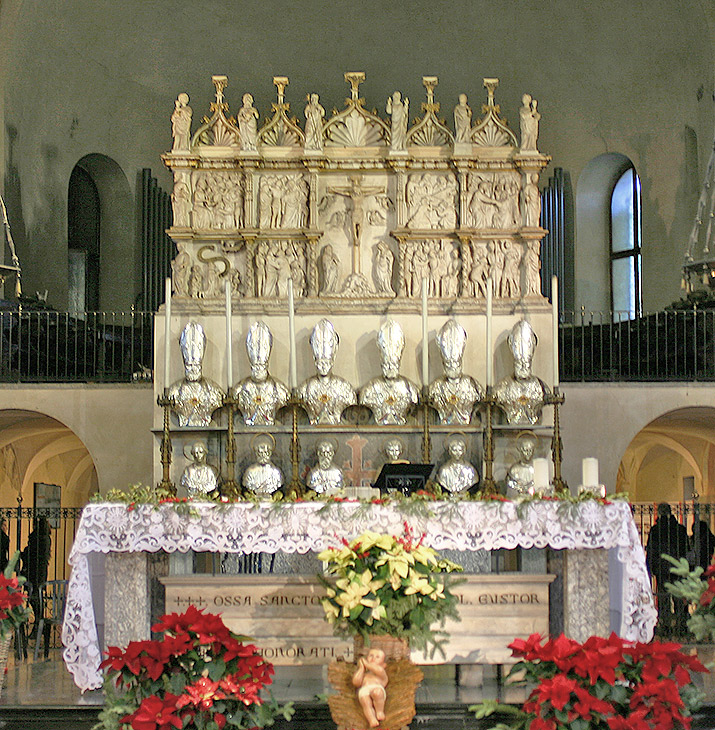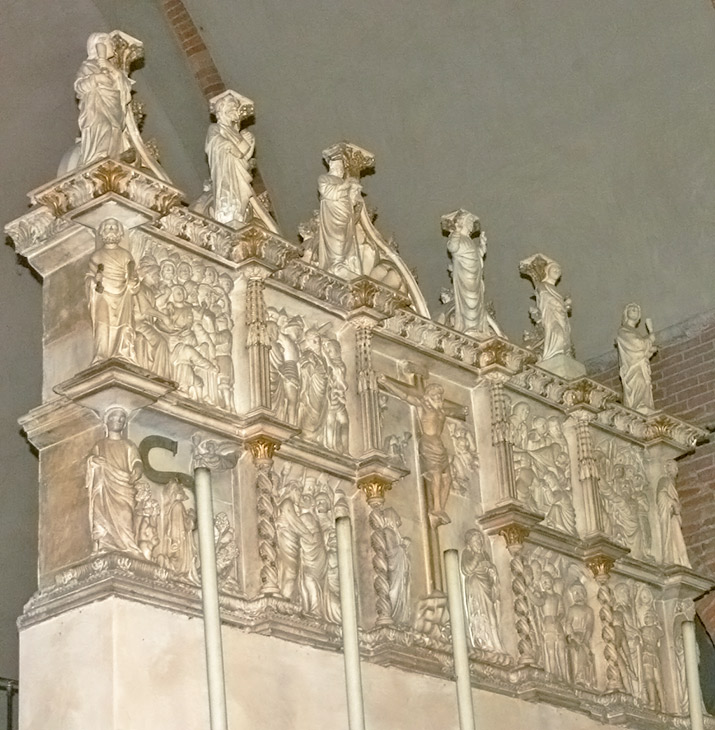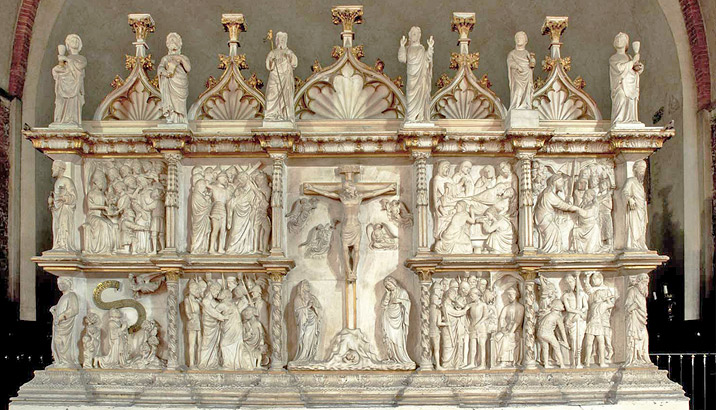THE ANCONA OF THE PASSION
The Ancona of the Passion, in the centre of the presbytery, is a monumental work commissioned by Gian Galeazzo Visconti, which was sculpted between 1395 and 1402. The reredos is divided into nine bas-relief compartments, the one in the middle being twice as high as the others and depicting the Crucifixion with the Virgin Mary and Saint John.
The other tiles, which are to be read from the bottom left and then moving on to the upper line, represent, left to right: the Agony in the Garden, the Kiss of Judas, Jesus before Caiaphas, the Flagellation of Jesus, Jesus before Pilate, Jesus carrying the Cross, the Deposition and Lamentation of Jesus, the Descent into Limbo.

In the past, the altarpiece was attributed to Giovannino de’ Grassi, but three different hands are likely to have worked on it. The first artist made the relief of the tiles, with the exception of the Agony in the Garden, which features a large crowd of characters and great attention to details in the costumes, in addition to a taste for accurate and precise storytelling and remarkable dramatization.

On the other hand, the little statues in the round depicting the Apostles, in the higher part, are to be ascribed to another master. Finally, the Crucifixion and the Agony in the Garden, of great quality, are attributed to Jacopino da Tradate. These two scenes, with a high quality level, are characterised by an extraordinary definition of drapery, attention to gestures and a search for psychological expressiveness.






